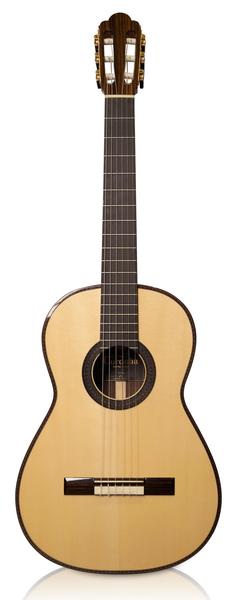A member of the family of musical instruments called chordophones, the guitar is a stringed instrument with which sound is produced by "plucking" a series of strings running along the instrument's body. While the strings are plucked with one hand, they are simultaneously fingered with the other hand against frets, which are metal strips located on the instrument's neck. The subsequent sound is amplified through a resonating body. There are four general categories of acoustic (non-electric) guitars: flat-top steel-stringed, arched top, classic, and flamenco
References to guitar-like instruments date back many centuries, and virtually every society throughout history has been found to have used a variation of the instrument. The forerunner of today's guitars were single-string bows developed during early human history. In sections of Asia and Africa, bows of this type have been unearthed in archaeological digs of ancient civilizations. Interestingly, one of these discoveries included an ancient Hittite carving—dating back more than 3,000 years—that depicted an instrument bearing many of the same features of today's guitar: the curves of the body, a flat top with an incurred arc of five sound holes on either side, and a long fretted neck that ran the entire length of the body.


